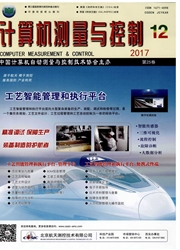

 中文摘要:
中文摘要:
针对自适应波束形成系统中权值求解计算量大的问题,研究了基于LCMV的逆QR分解算法(IQRD-SMI算法)及其传统脉动流水的GR-TSA实现结构,在Matlab中对算法以脉动阵搭建并进行算法仿真;分析了CORDIC技术的原理以及如何利用它在FPGA上实现Systolic阵中的处理单元;在此基础上,给出一种基于Systolic阵列的复用IQRD-SMI算法实现结构GR-ITSA,比较了它与已有文献中结构的异同;基于ISE软件,在Xilinx的xc7k325t型FPGA上实现了基于脉动阵列的IQRD-SMI算法的底层设计和硬件仿真,并将FPGA定点仿真数据回传Matlab与计算机浮点仿真数据对比,进而进行系统的性能与误差分析。
 英文摘要:
英文摘要:
For the problem of the weight values need a large amount of calculations in the adaptive beam--forming system, studied the in- verse QR decomposition algorithm based on LCMV (IQRD--SMI algorithm) and the structure of traditional Systolic array GR--TSA, built with systolic array structures and simulated in Matlab. The principle of CORDIC technology is analyzed and how to use it on FPGA imple- ment systolic array processing unit. On the basis of this, Based on the reuse of systolic arrays IQRD--SMI algorithm structure is given, Compared it with existing in the literature. Underlying design based on IQRD--SMI algorithm and hardware simulation based on systolic ar- ray he realized with xc7k325t in Xilinx FPGA, And the FPGA fixed--point simulation data and the computer floating point simulation data contrast. The system and error is analysed.
 同期刊论文项目
同期刊论文项目
 同项目期刊论文
同项目期刊论文
 期刊信息
期刊信息
